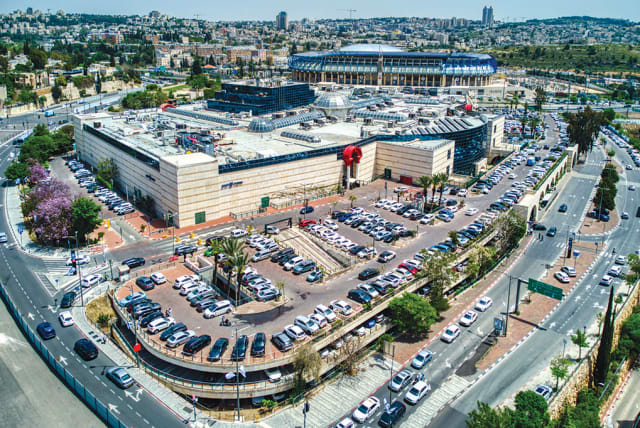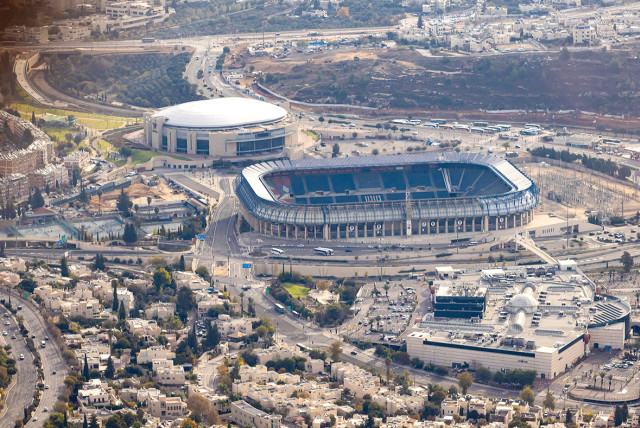Malha: Jerusalem’s regenerated jewel

Neighborhood Corner: The name of the neighborhood is a distortion of the name of the Arab village al-Malha, upon the ruins of which the neighborhood was established.

Malha sits in a stunning setting, southwest of Jerusalem.
The name of the neighborhood is a distortion of the name of the Arab village al-Malha, upon the ruins of which the neighborhood was established. The Arab residents of the village fled during the War of Independence.
The Hebrew name given to the neighborhood is Manhat. This name, along with the name Malha, appears on the city’s road direction signs. The neighborhood borders the Gilo Forest to the south, Katamonim to the east, Ramat Sharett, Kiryat Yovel, Ir Ganim to the north, and Givat Massuah to the west.
The alleys in the old part of the neighborhood (based around the Arab village houses) are named after immigrant ships. The streets of the new Malha are named after animals, due to its proximity to the adjacent Biblical Zoo.
History
The Arab village of al-Malha was a battleground during the War of Independence. Until the declaration of the establishment of the State of Israel, the village was a strategic point from which Arab forces sniped at Jerusalem.
On July 14 and 15, 1948, al-Malha, already half abandoned and held by irregular Arab fighters, was captured by Irgun and Lehi units, and its remaining residents fled.
The village area and the surrounding lands were later annexed to western Jerusalem, along with the lands of Ein Kerem, Lifta, Deir Yassin, and other abandoned villages that were outside the city’s municipal boundary during the British Mandate.
In June 1949, the abandoned houses of Malha were settled by immigrants, mostly from Tunisia, with a minority from Kurdistan and Morocco. Initially, the village was not municipally attached to Jerusalem. It was supposed to be an agricultural settlement and was defined as a worker’s moshav. The Jewish Agency provided it with agricultural equipment and livestock, which it later took back, claiming that the plan had changed and the place would become an urban settlement. Additionally, the residents sold the goats they had received from the agency and began working as laborers in Jerusalem.
In March 1951, local council elections were held in the village, and the residents demanded it be included within the city limits of Jerusalem and connected to the city’s electricity and water networks. At the beginning of 1953, the village was officially annexed to Jerusalem, but it was only connected to the electricity grid six years later.
In its early days, it was considered a distant and underprivileged neighborhood, suffering from neglect and inhabited by a low-income population. Over the years, especially after the Six Day War, bohemian individuals began to take an interest in the rural and picturesque character of the neighborhood, with its well-preserved Arab stone houses and narrow alleyways. An informal and slow process of preservation and renovation of some of the houses began in the neighborhood. In the early 1970s, the Israel Land Authority (ILA) began regularizing the registration of buildings in the neighborhood, along with the Jerusalem Municipality handling and registering of building additions constructed without permits.
In the mid-1980s, the development and expansion of the neighborhood beyond the historical core of the al-Malha village began. Alongside the old village houses, a neighborhood of private homes, cottages, and luxury apartments was built.
The Malha Sports Hall was inaugurated in 1983, followed by construction of Teddy Stadium and the Jerusalem Mall (commonly known as Malha Mall) – one of Israel’s largest malls – beginning in 1987 in the valley between the neighborhood and Katamonim.
In January 1992, during development works in the neighborhood, the Muslim cemetery of the village al-Malha was completely destroyed. A month later, Jerusalem deputy mayor Nissim Zeev proposed converting the village mosque, which had stood abandoned since 1948, into a synagogue.
In 1997, the first phase of the Malha Technology Park was inaugurated south of the mall.
In 2011, after the building land reserves in the neighborhood were exhausted, the Jerusalem District Planning and Building Committee approved a city plan for the construction of 400 housing units on the southern slopes of the neighborhood. This followed a change in the area’s land designation from public afforestation to residential. In July 2019, the Jerusalem Local Planning and Building Committee approved a plan to build 224 apartments in 14 buildings in the area, with 80% of the apartments to be marketed under the Buyer’s Price program.
The neighborhood has featured somewhat prominently in Israeli legal history too in the past decade. In 2015, ex-prime minister Ehud Olmert became the first to serve both in the position of PM and serve time when he was sentenced to prison for 18 months for his bribery conviction in the Holyland case.
Olmert was found guilty of accepting more than NIS 1.5 million in bribes (out of around NIS 9m. given to public officials), either directly or through aides and his brother Yossi – between 1993 and 1999 while mayor of Jerusalem – to overcome zoning and other legal barriers to the Holyland real estate project in Malha.
Today
Urban regeneration has transformed Malha into a sought-after neighborhood in Jerusalem, marked by significant development and modernization efforts. Initially considered remote and underdeveloped, Malha has seen substantial investment and renovation, including the construction of upscale housing, modern amenities, and significant infrastructure projects.
These efforts have not only revitalized the area but also attracted a diverse and more affluent population, making Malha one of Jerusalem’s most desirable residential areas.
At the end of 2019, the construction of the light rail Green Line began at the foot of the neighborhood.
Activities await
The Jerusalem Technology Park is a large complex housing several buildings and a 17-story tower. It includes three additional buildings occupied by hi-tech companies, technology firms, banking (headquarters of Bank Leumi in Jerusalem and its main branch), international media, pharmacology, and academic institutions (Open University, John Bryce College).
The Jerusalem Mall (Malha Mall), established by the Azrieli Group of Malls, opened in 1993. The mall is a major attraction for people from all over Jerusalem and is often cited as contributing to the decline of the downtown Jerusalem commercial area. In December 2021, the expansion of Malha Mall was approved, including the construction of two 18-story towers for employment and assisted living.
The Jerusalem Biblical Zoo is located near the Malha and Givat Massuah neighborhoods in Jerusalem, on the northern slopes of the Refaim Valley, close to the Ein Yael (Ein Yalu) and Ein Lavan springs.
Teddy Stadium, the city’s soccer stadium, named after Jerusalem mayor Teddy Kollek, was established in 1991 (replacing the YMCA Stadium) and currently serves as the home ground for the Beitar Jerusalem and Hapoel Jerusalem soccer clubs. The stadium has 31,733 seats, becoming the largest stadium in Israel after the Ramat Gan Stadium was limited to 13,370 seats. It is considered one of the most advanced and well-maintained stadiums in the country. Alongside Teddy Stadium sits the Pais Arena Jerusalem, a multi-purpose arena with 11,000 seats. The arena includes a gym, press area, and concession stands. Besides sports events, it serves as a center for cultural, entertainment, and conference activities, hosting rock concerts and international conventions.
The Jerusalem Malha Train Station opened in 2005 and served as the terminal station until 2020. It was Jerusalem’s main station until the opening of the Jerusalem-Yitzhak Navon Station in 2018. The opening of the Tel-Aviv-Jerusalem railway led to the closure of Malha’s station, but plans to extend the train line from Yitzhak Navon station down through Jerusalem city center and Malha will lead to the station’s reopening in the near future. ■
Jerusalem Post Store
`; document.getElementById("linkPremium").innerHTML = cont; var divWithLink = document.getElementById("premium-link"); if (divWithLink !== null && divWithLink !== 'undefined') { divWithLink.style.border = "solid 1px #cb0f3e"; divWithLink.style.textAlign = "center"; divWithLink.style.marginBottom = "15px"; divWithLink.style.marginTop = "15px"; divWithLink.style.width = "100%"; divWithLink.style.backgroundColor = "#122952"; divWithLink.style.color = "#ffffff"; divWithLink.style.lineHeight = "1.5"; } } (function (v, i) { });


